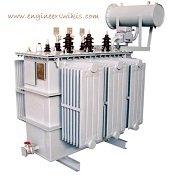
Overcurrent protection is a critical aspect of transformer protection, as it helps safeguard the transformer against excessive currents that can lead to thermal damage, insulation failure, and other potential issues. Here’s an overview of overcurrent protection methods commonly employed for transformers:
Fuses:
Fuses are a simple and cost-effective means of overcurrent protection. They are designed to melt and disconnect the circuit when the current exceeds a predefined rating. Fuses typically placed in series with the transformer winding or connected to the primary or secondary circuit. When a fault or excessive current occurs, the fuse element melts, interrupting the current flow and isolating the transformer.
Thermal Overload Relays:
Thermal overload relays rely on the heating effect of current to detect overcurrent conditions. They typically connect in series with the transformer winding and contain a bimetallic element that deforms due to heat generated by the current passing through it. As the temperature rises, the bimetallic element bends and eventually actuates the relay to trip the circuit breaker .
Electronic Overcurrent Relays:
Electronic overcurrent relays provide more advanced and flexible protection compared to traditional thermal relays. They utilize electronic components and microprocessors to measure and analyze the current waveform. Electronic relays offer features such as adjustable current settings, time delays, and coordination capabilities. They can provide more precise and selective protection for transformers.
Differential Protection:
While primarily used for fault detection, differential protection can also provide overcurrent protection for transformers. Differential protection compares the current entering and leaving the transformer. If there is a significant difference between the currents, indicating an internal fault, the differential relay trips the circuit breaker to isolate the transformer. Differential protection can detect both internal and external faults, including overcurrent conditions.
Backup Overcurrent Relays:
Backup overcurrent relays used as a secondary layer of protection for transformers. They typically set at higher current levels than the primary overcurrent relays to ensure selective coordination. If the primary overcurrent protection fails to operate or is delayed, the backup relays initiate a trip signal to isolate the transformer.
It is to be note that the selection and coordination of overcurrent protection devices for transformers should consider factors such as the transformer rating, impedance, load characteristics, and system requirements.
